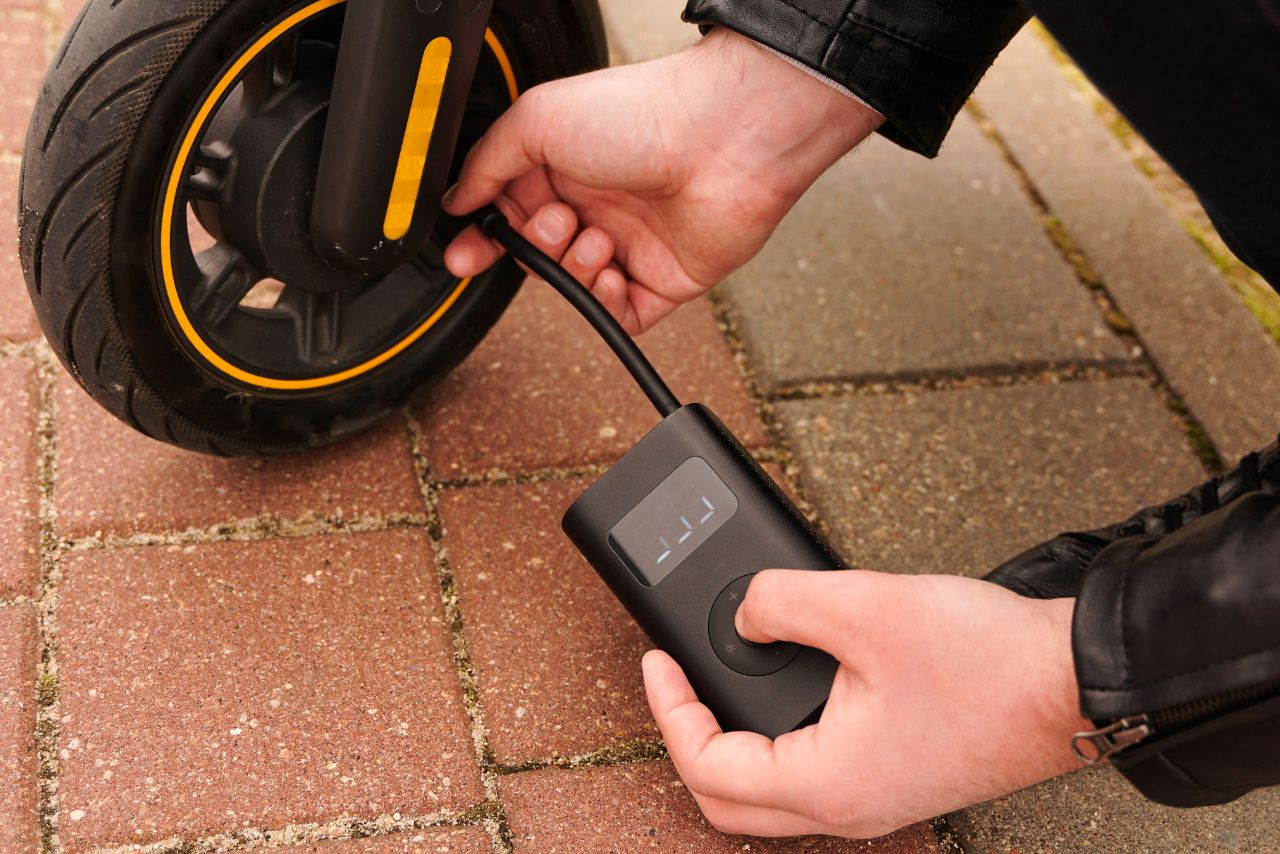Do you want to ensure that your spark plugs are installed correctly every time? Do You Need A Torque Wrench For Spark Plugs? If so, then you need to consider the importance of using a torque wrench for spark plug installation.
You do not need a torque wrench to change your spark plugs, but it is recommended. A torque wrench is a tool that helps you tighten bolts and nuts to a specific amount of force, or torque.
This is important for spark plugs because if they are not tightened to the correct torque, they can cause problems with your engine.
Under-tightening a spark plug can cause it to come loose, which can lead to misfires and other engine problems.
Over-tightening a spark plug can damage the threads in the cylinder head, which can be very expensive to repair.
A torque wrench is a precision tool that allows you to tighten bolts, nuts, and in this case, spark plugs, to a specific torque value. It ensures that the plugs are tightened to the manufacturer’s specifications, preventing under or over-tightening.
In this article, we will explore the significance of torque in spark plug installation, the benefits of using a torque wrench, and the potential consequences of neglecting this essential tool.
We will also provide step-by-step instructions on how to use a torque wrench for spark plug installation and address common misconceptions.
So, let’s dive in and discover why a torque wrench is a must-have tool for any spark plug installation.
Importance of Properly Installing Spark Plugs
You absolutely need to use a torque wrench when installing spark plugs correctly; otherwise, you risk damaging your engine and wasting your time. Proper spark plug installation techniques are crucial for the overall performance and longevity of your engine.
By using a torque wrench, you ensure that the spark plugs are tightened with the recommended torque values, which guarantees a secure fit and prevents any leaks or misfires.
This precision is essential because if the spark plugs are not tightened enough, they may become loose over time and cause issues like reduced power, poor fuel efficiency, and even engine misfires.
On the other hand, over-tightening the spark plugs can lead to thread damage or breakage, which may require costly repairs. Therefore, investing in a torque wrench is a wise decision to ensure the proper installation of spark plugs and maintain the optimal functioning of your engine.
Understanding Torque and its Role in Spark Plug Installation
To ensure proper installation, it’s crucial to understand the importance of torque when putting in new plugs.
Torque refers to the force used to tighten the spark plugs to the proper specifications. Here are four key points to understand about torque and its role in spark plug installation:
- Importance of torque in automotive maintenance: Proper torque ensures that the spark plugs are securely fastened, preventing them from becoming loose or falling out during operation.
- Preventing damage: Over-tightening can damage the spark plug or the cylinder head, while under-tightening can lead to loose plugs and decreased performance.
- Consistency: Torque specifications vary depending on the type of spark plug being used. Following the manufacturer’s recommended torque specifications ensures consistent and accurate installation.
- Torque wrench necessity: A torque wrench is highly recommended for spark plug installation as it allows for precise and controlled tightening, reducing the risk of over or under-tightening.
Understanding the importance of torque and using a torque wrench to achieve the proper torque specifications is essential for a successful spark plug installation and optimal engine performance.
Benefits of Using a Torque Wrench
Maximizing performance and ensuring precision, employing a torque wrench amplifies efficiency and guarantees flawless results during installation. When it comes to spark plug installation, using a torque wrench offers several benefits.
Firstly, it provides the correct amount of force needed to tighten the spark plug to the manufacturer’s specifications, preventing overtightening or under tightening. This ensures a proper seal, preventing any potential leaks or damage to the engine.
Secondly, a torque wrench helps distribute the load evenly across the spark plug threads, reducing the risk of stripping or breaking them.
Lastly, it eliminates guesswork by providing a precise measurement of the applied torque, promoting consistency and accuracy.
To illustrate the importance of a torque wrench, consider the following table:
| Benefit | Description | Emotion |
|---|---|---|
| Proper Tightening | Ensures correct installation | Confidence |
| Prevents Damage | Reduces risk of leaks or breakage | Peace of mind |
| Consistency | Promotes accuracy and uniformity | Reliability |
| Time Saving | Increases efficiency | Convenience |
By using a torque wrench, you can experience these benefits and achieve a proper installation every time, guaranteeing optimal performance and longevity of your spark plugs.
Potential Consequences of Neglecting a Torque Wrench

When neglecting to use a torque wrench, you risk encountering several potential consequences. Firstly, your spark plugs may become loose over time, leading to misfires and poor engine performance.
Additionally, the threads in your engine block can become damaged if the spark plugs are not tightened to the correct specifications, resulting in costly repairs.
Lastly, without the proper torque, the efficiency and overall performance of your engine may be compromised, leading to decreased fuel economy and power output.
Loose Spark Plugs
Ensure your spark plugs aren’t loose by using a torque wrench for maximum performance. Properly tightening your spark plugs is crucial to prevent them from coming loose. When spark plugs aren’t tightened correctly, they can lead to various issues.
One of the signs of loose spark plugs is a decrease in engine performance. You may notice a lack of power, misfires, or difficulty starting your vehicle.
Loose spark plugs can also result in poor fuel economy and increased emissions. Ignoring these signs and neglecting the use of a torque wrench can cause damage to the spark plug threads and cylinder head.
By using a torque wrench, you can make sure your spark plugs are tightened to the manufacturer’s specifications, preventing any potential problems and ensuring optimal engine performance.
Damaged Threads
Damaged threads can lead to problems with the proper installation and performance of your vehicle’s spark plugs.
When the threads are damaged, it becomes difficult to securely fasten the spark plug into the cylinder head, compromising the seal and causing potential issues such as misfires, reduced power, and poor fuel economy. To prevent this, there are a few measures you can take.
Firstly, always use a torque wrench to ensure that you are tightening the spark plug to the manufacturer’s recommended specifications. This will help prevent over-tightening, which can strip the threads.
It is important to inspect the spark plug threads before installation for any signs of damage or wear. If you notice any issues, it is best to replace the spark plug to avoid further damage to the threads.
Following these prevention measures will help ensure the proper installation and performance of your spark plugs.
| Effects of Damaged Threads | Prevention Measures |
|---|---|
| Misfires | Use a torque wrench |
| Reduced power | Inspect spark plug threads |
| Poor fuel economy | Replace damaged spark plug |
Reduced Engine Efficiency and Performance
Reduced engine efficiency and performance can lead to a decrease in overall vehicle satisfaction and potentially higher maintenance costs. When spark plugs aren’t properly tightened, it can result in reduced fuel efficiency and decreased power output.
This occurs because the spark plugs play a crucial role in igniting the air and fuel mixture in the engine.
If the spark plugs aren’t tightened to the correct torque specification, they may not create a strong enough spark to efficiently ignite the mixture. This can lead to incomplete combustion, resulting in wasted fuel and reduced fuel efficiency.
Additionally, a loose spark plug can cause a misfire, which can lead to a decrease in power output and overall engine performance. To ensure optimal engine efficiency and performance, it’s important to use a torque wrench when installing spark plugs.
Steps for Using a Torque Wrench to Install Spark Plugs

To properly install spark plugs, you’ll want to start by positioning the torque wrench over the spark plug. This ensures that you can achieve the proper torque settings and avoid any potential damage to the spark plug or engine. Here are the steps for using a torque wrench to install spark plugs:
- Set the torque wrench to the manufacturer’s recommended torque setting for your specific spark plugs.
- Insert the spark plug into the spark plug socket and carefully lower it into the spark plug hole.
- Slowly tighten the spark plug by turning the torque wrench clockwise until you feel resistance.
- Once you feel resistance, apply the proper torque technique by exerting a steady, controlled force until you reach the recommended torque setting.
- It’s important not to over-tighten the spark plug, as this can cause damage to the threads or the spark plug itself.
- Finally, double-check the torque setting to ensure it’s within the proper range.
Common Misconceptions about Torque Wrenches and Spark Plug Installation
One common misconception about using a torque wrench for spark plug installation is that it can be easily substituted with alternative tools, but this can lead to inaccurate torque settings and potential engine issues.
To clarify this misconception, let’s take a closer look at some common mistakes in spark plug installation and the misconceptions surrounding them.
| Misconception | Explanation |
|---|---|
| Tightening by feel | Some people believe that they can simply tighten the spark plugs by feel, but this can result in under or over-tightening, leading to poor combustion and potential damage to the spark plug or engine. Using a torque wrench ensures consistent and accurate torque settings. |
| Using an impact wrench | Another misconception is that an impact wrench can be used instead of a torque wrench. While an impact wrench can quickly tighten the spark plugs, it lacks the precision and control provided by a torque wrench, leading to inconsistent torque settings. |
| Skipping torque specifications | Ignoring the manufacturer’s recommended torque specifications is a common mistake. Each spark plug has a specific torque requirement, and not following these specifications can result in loose or overtightened plugs, affecting performance and potentially causing engine damage. |
| Reusing old torque wrench settings | Some may believe that once they have found the correct torque setting, they can reuse it for future installations. However, torque settings can change over time due to wear and tear, so it is important to always refer to the manufacturer’s specifications and adjust the torque accordingly. |
Tips for Maintaining and Caring for a Torque Wrench
Taking proper care of your torque wrench is essential for its longevity and accurate performance. To maintain accuracy, it’s important to calibrate torque wrenches regularly.
This ensures that the wrench is providing the correct amount of torque and prevents over or under tightening of spark plugs. Calibration should be done by a professional or using a torque wrench calibration tool.
Additionally, it’s crucial to store the torque wrench properly to avoid damage. Keep it in a clean, dry, and secure location, away from extreme temperatures. Avoid dropping or mishandling the wrench as this can affect its accuracy.
Regularly inspect the torque wrench for any signs of wear or damage, such as worn out or damaged components.
Watch Video: Do You Need A Torque Wrench For Spark Plugs?
Conclusion: Do You Need A Torque Wrench For Spark Plugs?
A properly calibrated and well-maintained torque wrench is an indispensable tool for ensuring accurate and secure installation of your vehicle’s vital components.
When it comes to spark plug installation, following the manufacturer’s recommended spark plug torque specifications is crucial for optimal performance and longevity.
Using a torque wrench allows you to apply the exact amount of torque required, preventing over-tightening or under-tightening, which can lead to various issues such as stripped threads or loose plugs.
It provides a precise and consistent torque, ensuring a proper seal and preventing any leaks.
While some may consider using alternative methods like ‘feel’ or guesswork, these methods are unreliable and can result in uneven torque distribution or damage to the spark plugs.
Frequently Asked Questions
Can I Install Spark Plugs without Using a Torque Wrench?
Yes, you can install spark plugs without using a torque wrench. Alternative methods for spark plug installation include using a socket wrench and tightening them until they are snug. However, be cautious not to overtighten them.
What Are the Potential Consequences of Over-Tightening Spark Plugs?
Over-tightening spark plugs can potentially cause damage and lead to spark plug failure. The excessive force can strip the threads, crack the porcelain, or damage the electrode, resulting in poor ignition and engine performance.
Are There Any Specific Torque Settings for Different Types of Spark Plugs?
To ensure proper installation and avoid damaging the spark plug or engine, it is essential to use a torque wrench.
Different types of spark plugs have specific torque settings that should be followed for optimal performance and longevity.
Can I Use a Regular Wrench Instead of A Torque Wrench for Spark Plug Installation?
You can use a regular wrench as an alternative to a torque wrench for spark plug installation.
The pros are that it is easily accessible and can get the job done. However, the cons are that it may not provide the precise torque required, potentially leading to over or under-tightening the spark plugs.
How Often Should I Calibrate My Torque Wrench for Accurate Spark Plug Installation?
To ensure accurate spark plug installation, it is important to calibrate your torque wrench regularly.
Proper torque is crucial not only for spark plugs but also for other automotive components. Avoid common mistakes like over-tightening or under-tightening.
Conclusion: Do You Need A Torque Wrench For Spark Plugs?
It’s absolutely necessary to use a torque wrench when installing spark plugs. This tool ensures that the plugs are tightened to the manufacturer’s specifications, preventing issues such as misfires, poor performance, and even engine damage.
By using a torque wrench, you can achieve precise and accurate installation, ensuring the longevity and efficiency of your spark plugs. Remember to properly maintain and care for your torque wrench to ensure its reliability.
Don’t overlook the importance of this tool in maintaining the overall health of your engine.




